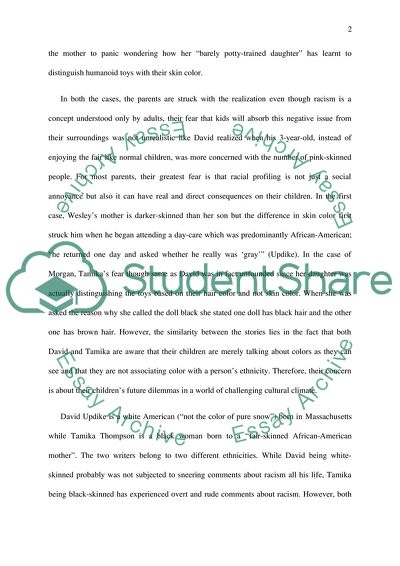Cite this document
(The Vitality of Cultural Climate in Children Upbringing Assignment, n.d.)
The Vitality of Cultural Climate in Children Upbringing Assignment. https://studentshare.org/social-science/1844551-comparisoncontrast-essay-its-based-on-3-stories-but-i-just-have-to-chose-2-to-compare-and-contrast-in-well-developed-form-mainly-compare-and-contrasting-2-stories-that-i-chose-following-what-the-instructor-wanted
The Vitality of Cultural Climate in Children Upbringing Assignment. https://studentshare.org/social-science/1844551-comparisoncontrast-essay-its-based-on-3-stories-but-i-just-have-to-chose-2-to-compare-and-contrast-in-well-developed-form-mainly-compare-and-contrasting-2-stories-that-i-chose-following-what-the-instructor-wanted
(The Vitality of Cultural Climate in Children Upbringing Assignment)
The Vitality of Cultural Climate in Children Upbringing Assignment. https://studentshare.org/social-science/1844551-comparisoncontrast-essay-its-based-on-3-stories-but-i-just-have-to-chose-2-to-compare-and-contrast-in-well-developed-form-mainly-compare-and-contrasting-2-stories-that-i-chose-following-what-the-instructor-wanted.
The Vitality of Cultural Climate in Children Upbringing Assignment. https://studentshare.org/social-science/1844551-comparisoncontrast-essay-its-based-on-3-stories-but-i-just-have-to-chose-2-to-compare-and-contrast-in-well-developed-form-mainly-compare-and-contrasting-2-stories-that-i-chose-following-what-the-instructor-wanted.
“The Vitality of Cultural Climate in Children Upbringing Assignment”. https://studentshare.org/social-science/1844551-comparisoncontrast-essay-its-based-on-3-stories-but-i-just-have-to-chose-2-to-compare-and-contrast-in-well-developed-form-mainly-compare-and-contrasting-2-stories-that-i-chose-following-what-the-instructor-wanted.


